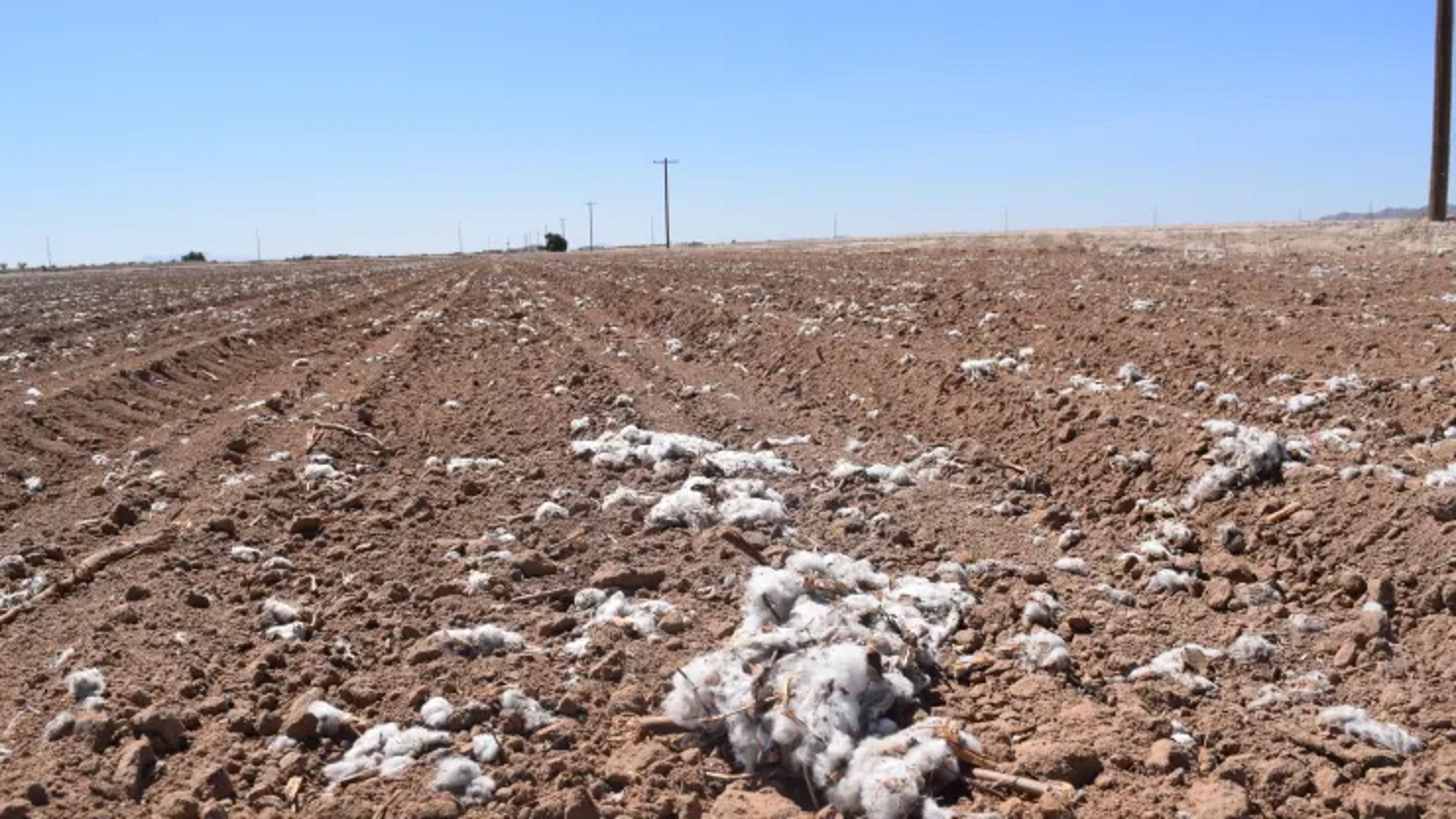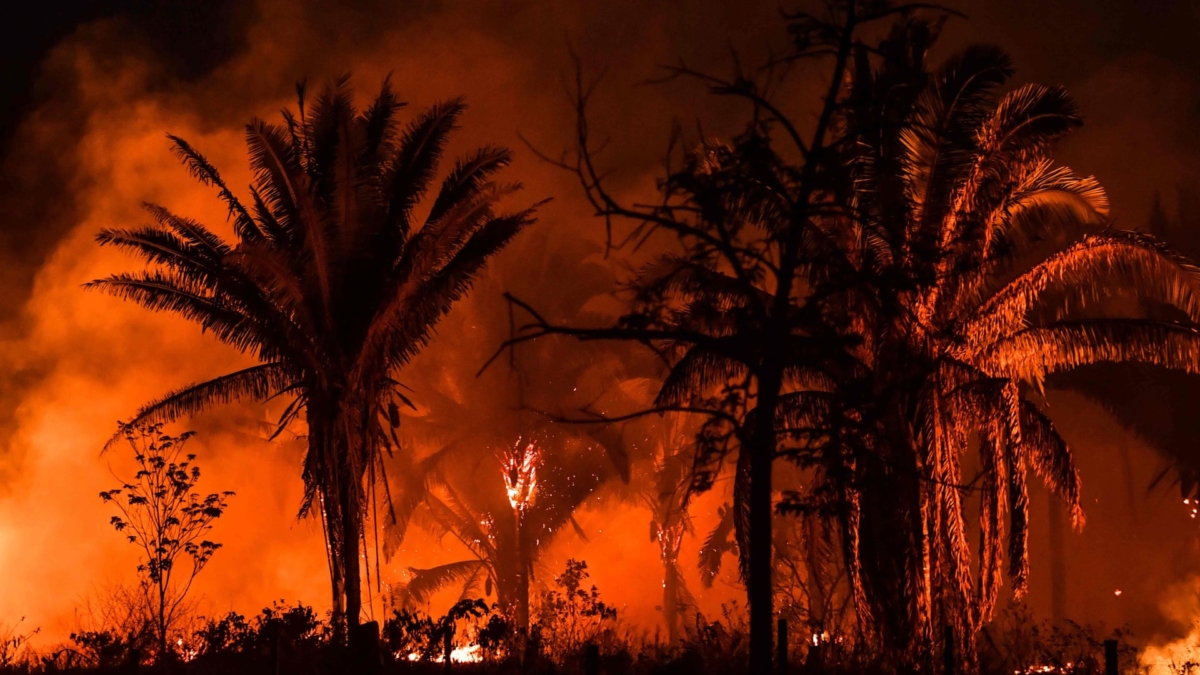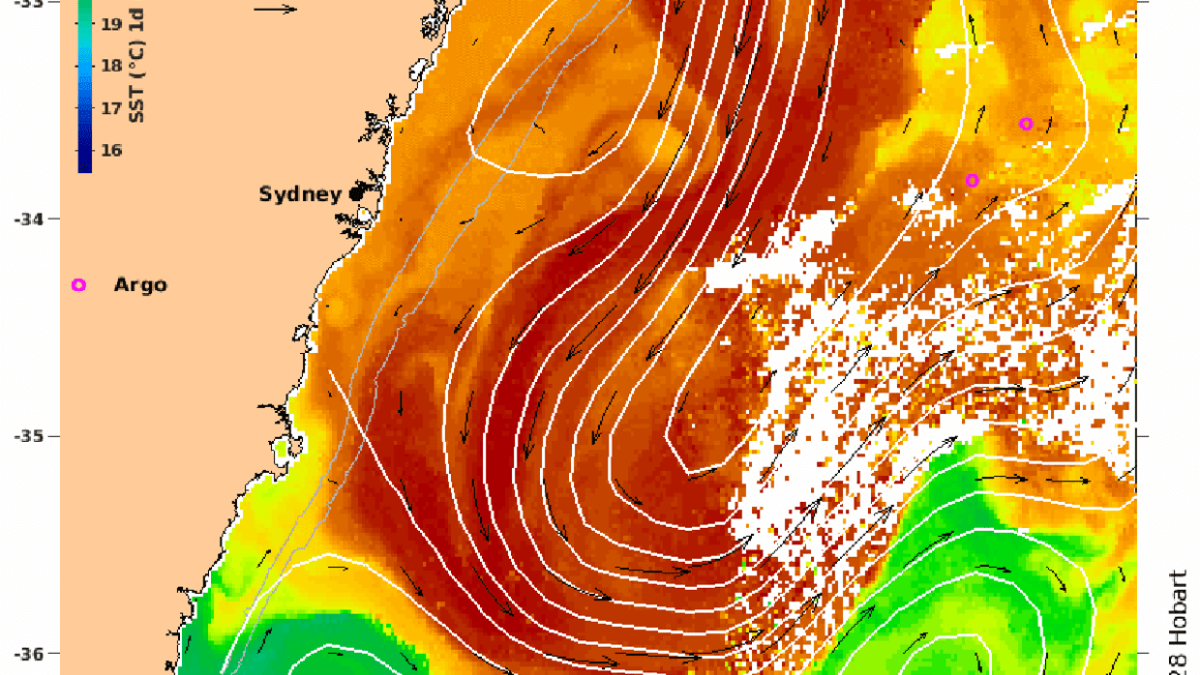Empty canals, dead cotton fields: Arizona farmers are getting slammed by 2022 water cuts in the U.S. West – “We’re not making one dime off this farm right now”

By Emma Newburger
3 April 2022
CASA GRANDE, Arizona (CNBC) – On the drought-stricken land where Pinal County farmers have irrigated crops for thousands of years, Nancy Caywood stopped her pickup truck along an empty canal and pointed to a field of dead alfalfa.
“It’s heart wrenching,” said Caywood, a third-generation farmer who manages 247 acres of property an hour outside of Phoenix. “My mom and dad toiled the land for so many years, and now we might have to give it up.”
Farming in the desert has always been a challenge for Arizona’s farmers, who grow water-intensive crops like cotton, alfalfa and corn for cows. But this year is different. An intensifying drought and declining reservoir levels across the Western U.S. prompted the first-ever cuts to their water supply from the Colorado River.
The canals that would normally bring water from an eastern Arizona reservoir to Caywood’s family farm have mostly dried up. The farm will soon be operating at less than half of its usual production. And Caywood is grappling with a recent 33% price hike for water she’s not receiving.
“We’re not making one dime off this farm right now,” Caywood said. “But we’re trying to hang on because this is what we love.”
More than 40 million people in the West rely on the Colorado River, which flows along Arizona’s western edge. The farmers hit the hardest this year are in Pinal County, a rural stretch of land where agriculture is receding and slowly getting replaced by solar panels and housing developments.

Driving through Casa Grande, a city of 55,000 people that’s about halfway between Phoenix and Tucson, you’ll see miles of unplanted land, dead cotton fields and dry canals.
Farmers here fear additional water restrictions in the coming weeks as a warming climate continues to reduce the amount of water that typically fills the Colorado River from rainfall and melting snow.
The Bureau of Reclamation in August declared a water shortage at Lake Mead, one of the river’s primary reservoirs, after water levels fell to historic lows. More than one-third of Arizona’s water flows up the Colorado River to Lake Mead.
The government’s declaration triggered Tier 1 water reductions, which slashed the state’s river water supply by nearly 20%, or 512,000 acre-feet. One acre-foot of water supplies about two households each year.
Arizona farmers use nearly three-quarters of the available water supply to irrigate their crops. As supply runs low, some farmers in Pinal County couldn’t afford to operate any longer and sold their land to solar developers. Others have left fields empty to cut down on water use, or have experimented with drought-resistant plants. […]

Megadrought tests resilience of farmers
Arizona’s climate doesn’t have enough rain to grow most crops. Still, for thousands of years, the rivers and aquifers that hold groundwater have supported the state’s now $23 billion agriculture industry.
Climate change and dwindling water supplies have wreaked havoc on the once prosperous farms that could endure the arid conditions. The U.S. West is now experiencing a megadrought that’s generated the two driest decades in the region in at least 1,200 years. Scientists say 42% of the drought’s severity can be attributed to human-caused climate change, and warn that conditions could persist for years.
The consequences are far-reaching. A prolonged drought will not just reduce local farm income in Arizona, but create tighter supply and increased food prices for consumers across the country.
Despite the brutal conditions, Caywood wants to continue the farming legacy of her parents, both of whom died last year. In an attempt to salvage her property, Nancy frequently conducts farm tours to educate people about the water crisis. Her son, Travis Hartman, has leased plots in other irrigation districts that currently have access to Colorado River water. [more]
Empty canals, dead cotton fields: Arizona farmers are getting slammed by water cuts in the West


